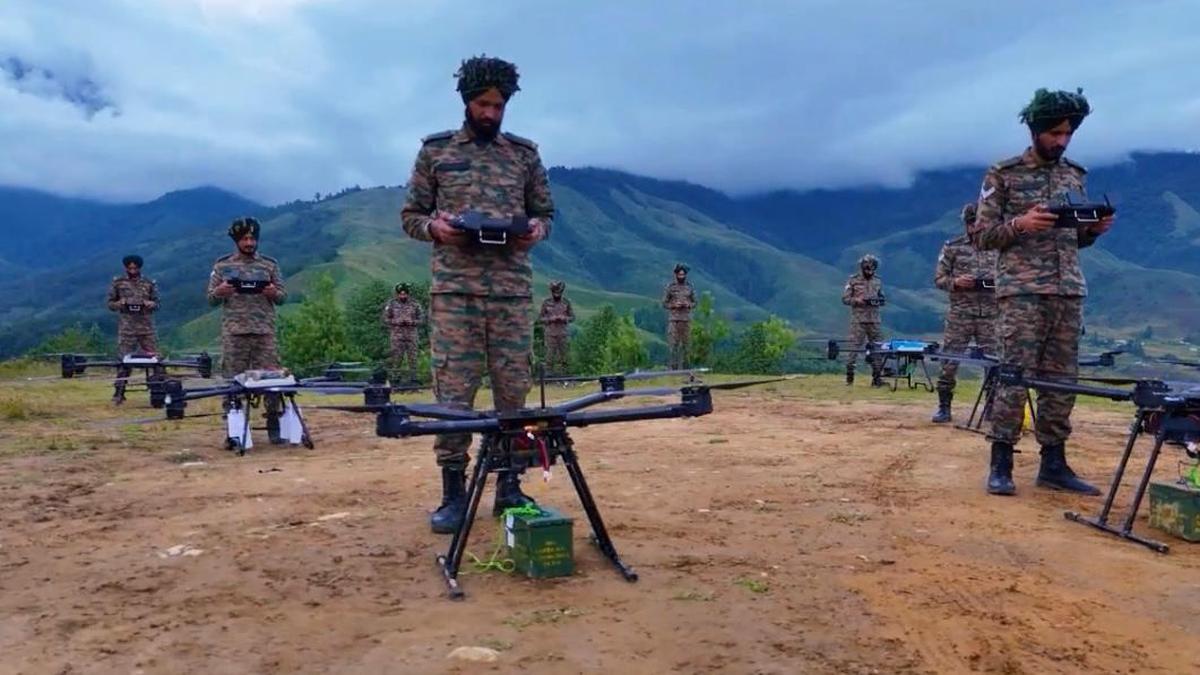Exercise SiyomPrahar

- 18 Sep 2025
In News:
The Indian Army's Exercise SiyomPrahar, represents a significant step in modernizing the Army’s operational capabilities. This field training exercise focused on validating the integration of unmanned aerial systems (UAS) into tactical operations, with a strong emphasis on surveillance, reconnaissance, target acquisition, and precision strikes. Below are the key highlights and insights from the exercise:
Key Objectives:
- Integration of Drone Technology: The core goal was to test how drone systems can be employed for persistent surveillance, battlefield reconnaissance, and precision strikes, thus enhancing overall combat effectiveness.
- Development of New TTPs (Tactics, Techniques, and Procedures): A key focus was on refining how drone-derived intelligence could be fused with conventional firepower, ensuring rapid decision-making in dynamic and evolving combat scenarios.
- Joint Targeting and Decision-making: The exercise aimed at refining joint targeting processes, highlighting the importance of real-time intelligence to improve targeting accuracy and decision-making speed in the heat of battle.
Key Features of the Exercise:
- Realistic Battlefield Conditions: The exercise was conducted under simulated real-world combat conditions, providing a comprehensive test of UAS capabilities in diverse operational environments.
- Synergy Between Traditional Combat and Emerging Technologies:Exercise SiyomPrahar underscored the importance of blending traditional combat arms with cutting-edge technologies, such as drones, to create a more adaptive and efficient military force.
- Operational Preparedness: The exercise was a significant step toward enhancing the Indian Army’s operational preparedness for future combat scenarios, integrating modern technology to ensure readiness for future battlefields.
Strategic Importance and Key Insights:
- Adaptability and Synergy: The exercise highlighted how the Army is integrating modern warfare tactics with traditional methods to create a more effective, adaptable force that can operate in dynamic and complex environments.
- Real-Time Data Utilization: By using drones to gather real-time intelligence, the Indian Army is significantly improving targeting accuracy, enabling faster, more informed decisions in combat situations.
- Reduced Soldier Risk: The deployment of drones for reconnaissance and strikes minimizes the exposure of ground troops to potential dangers, enhancing both tactical effectiveness and safety on the battlefield.
- Joint Operational Capabilities: Exercise SiyomPrahar demonstrated how drones can be integrated into joint operational structures, improving communication and coordination between various arms of the military.
Broader Implications for Future Warfare:
- Technological Innovation in Combat: The successful integration of drone technology in this exercise indicates a shift towards technology-driven warfare, where drones play a critical role in intelligence gathering, battlefield awareness, and precision targeting.
- India’s Commitment to Modernization: The exercise is a testament to India’s proactive approach to adapting to the changing nature of warfare, ensuring that its forces remain future-ready and capable of responding effectively to emerging security challenges.
